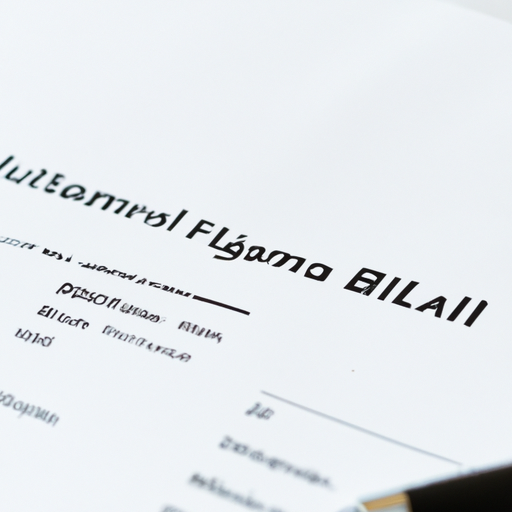
When it comes to managing your finances effectively, understanding the basics of bilan comptable is essential. In this comprehensive article, we will delve into the key components of bilan comptable and provide you with the knowledge you need to analyze and interpret your financial statements for success. Whether you are a business owner or an individual looking to improve your financial literacy, mastering the concept of bilan comptable is crucial. Stay tuned as we explore the ins and outs of this important financial tool and learn how to leverage it for your financial well-being.
- 1. Understanding the Basics of Bilan Comptable: A Comprehensive Overview
- 2. Key Components of Bilan Comptable: What You Need to Know
- 3. Tips for Analyzing and Interpreting Your Bilan Comptable for Financial Success
1. Understanding the Basics of Bilan Comptable: A Comprehensive Overview
The bilan comptable, or balance sheet, is a crucial financial statement that provides a snapshot of a company's financial position at a specific point in time. It is a key component of a company's financial reporting and is used by stakeholders such as investors, creditors, and management to assess the financial health and performance of the business.
The bilan comptable is divided into two main sections: assets and liabilities. Assets represent what the company owns, such as cash, inventory, equipment, and investments, while liabilities represent what the company owes, such as loans, accounts payable, and other debts. The balance sheet follows the accounting equation: Assets = Liabilities + Equity, which ensures that the company's resources are balanced with its obligations.
Analyzing the bilan comptable can provide valuable insights into a company's liquidity, solvency, and overall financial stability. For example, a high level of cash and low levels of debt on the balance sheet may indicate a strong financial position, while a high level of debt and low levels of assets could signal potential financial risks.
In conclusion, understanding the basics of bilan comptable is essential for anyone involved in financial analysis or decision-making. By examining this important financial statement, stakeholders can gain a comprehensive overview of a company's financial health and make informed decisions about its future.
2. Key Components of Bilan Comptable: What You Need to Know
The Bilan Comptable, also known as the balance sheet, is a crucial financial statement that provides a snapshot of a company's financial position at a specific point in time. Understanding the key components of a Bilan Comptable is essential for investors, creditors, and other stakeholders to assess the health and performance of a business.
The Bilan Comptable is divided into two main sections: assets and liabilities. Assets represent what the company owns, while liabilities represent what the company owes. The key components of the Bilan Comptable include:
1. Actif (Assets): This section includes all the resources owned by the company, such as cash, accounts receivable, inventory, investments, and property. Assets are typically listed in order of liquidity, with the most liquid assets (such as cash) listed first.
2. Passif (Liabilities): This section includes all the company's debts and obligations, such as accounts payable, loans, and accrued expenses. Liabilities are also listed in order of maturity, with short-term liabilities (due within one year) listed first, followed by long-term liabilities.
3. Capitaux Propres (Equity): This section represents the company's net worth, calculated as assets minus liabilities. Equity includes the initial investment by shareholders, retained earnings, and any additional contributions or distributions. It is a key indicator of the company's financial health and solvency.
By analyzing the key components of a Bilan Comptable, stakeholders can gain insight into the company's financial stability, liquidity, and overall performance. It is important to review the balance sheet in conjunction with other financial statements, such as the income statement and cash flow statement, to get a comprehensive understanding of the company's financial situation. Understanding these key components of the Bilan Comptable is essential for making informed investment and lending decisions.
3. Tips for Analyzing and Interpreting Your Bilan Comptable for Financial Success
When analyzing your bilan comptable, it is important to pay attention to certain key factors in order to ensure financial success. Here are some tips for effectively interpreting your bilan comptable:
1. Understand the structure of the bilan comptable: The bilan comptable is divided into two main sections – assets and liabilities. Assets represent what the company owns, while liabilities represent what the company owes. By understanding the structure of the bilan comptable, you can get a clear picture of the financial health of your company.
2. Calculate key financial ratios: Key financial ratios such as the current ratio, quick ratio, and debt-to-equity ratio can provide valuable insights into the financial stability of your company. These ratios can help you assess liquidity, solvency, and overall financial health.
3. Compare your bilan comptable over time: By comparing your current bilan comptable to previous periods, you can track the financial progress of your company. Look for trends and patterns in your assets and liabilities to identify areas of improvement or potential risks.
4. Seek professional advice: If you are unsure about how to interpret your bilan comptable, consider seeking the help of a financial advisor or accountant. They can provide valuable insights and recommendations for improving your financial performance.
By following these tips, you can effectively analyze and interpret your bilan comptable to ensure financial success for your company. Remember, a thorough understanding of your financial statements is essential for making informed business decisions and achieving long-term growth.